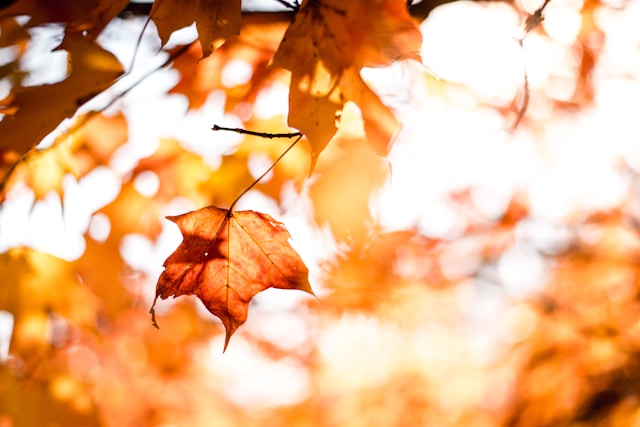As the nights draw in and the evenings turn darker, autumn often feels like an invitation toward winter — a season I find more difficult. For me, autumn itself is usually okay. The colours are beautiful, and I enjoy noticing the changes in nature. There’s something grounding about the crunch of leaves underfoot or the sudden appearance of misty mornings. It reminds me that change is constant, that life moves in cycles.
At the same time, I know that autumn is also a threshold. The days get shorter, the light fades faster, and I can feel my body anticipating the winter months ahead. I sometimes describe myself as a little cold-blooded — I’m always chasing warmth. I love the heat of summer, but I don’t cope well with being uncomfortably hot. Autumn feels like a balance between extremes, with cooler air that makes me want to be outside again. I often notice I exercise more in autumn than I do in summer or winter.
Still, the lack of light affects me. It stirs up old patterns of depression, and I can get easily frustrated when the sun disappears for days on end. I’ve learned that I need to be intentional about my wellbeing at this time of year. For me, that looks like stepping outside early in the day to catch the light, putting up twinkly lights before Christmas to soften the darkness, and keeping a rhythm of walking and moving. I’ve tried SAD lamps, and while they haven’t helped me, I know they make a real difference for others.
I also notice how these shifts ripple out into the lives of others. My children grow tired as the school term stretches on, and I see the same pattern in clients. Therapy referrals often rise in autumn, and then again after Christmas. January is usually the hardest month, but autumn is when the dips begin. Lower mood, fatigue, and difficulty adjusting to shorter days are common. Some people welcome the cosiness of the season and the build-up to Christmas; for me, it tends to feel more like pressure than joy.
As a therapist, I think the key is to recognise that these seasonal changes are not just about mood — they also touch on rhythms, routines, and the ways we inhabit our lives. Autumn can leave us feeling like we’re being carried forward whether we’re ready or not. The challenge is to find ways of meeting the season, rather than feeling swept away by it.
That might look different for each of us. Some people are anchored by routine — keeping regular sleep and wake times, planning meals, or sticking to exercise habits. Others need creativity and self-expression, finding comfort in journaling, painting, or cooking. For many, being outdoors is grounding, whether through walking, gardening, or simply sitting in a patch of daylight. The shift into autumn is an opportunity to ask: what keeps me topped up? What sustains me when the light fades?
Systemically, I’m also interested in how families and relationships adjust to seasonal change. It’s not just individuals who feel the impact — it’s whole households. In many families, tiredness shows up in children as they head deeper into the school year. Couples may find themselves more irritable with one another as energy dips. Extended families may begin to plan for Christmas and feel the weight of expectation. These are all parts of the seasonal system, and noticing them can help us respond more kindly — both to ourselves and to one another.
Autumn also invites us to pay attention to beauty. It’s easy to focus on the loss of light, but there is something undeniably restorative about autumn colours. Nature reminds us that endings can also be vivid and full of meaning. Sometimes, grounding ourselves in the sensory — the smell of woodsmoke, the sight of golden leaves, the sound of wind in the trees — can give us what words cannot.
So perhaps the invitation of autumn is twofold: to notice what is difficult, and to lean into what is life-giving. We can’t always change the fact that nights are longer or that our mood dips. But we can cultivate small practices that help. We can ask ourselves what kind of rhythm we want to carry into winter, and what sources of light — literal or metaphorical — we want to hold onto.
For me, it comes down to remembering that each season has its own wisdom. Autumn tells us that change is inevitable, that letting go is part of life, and that beauty can be found even as the days grow shorter. If there’s one message I would want readers to take away, it’s this: know what you need, and don’t be afraid to create rituals and routines that keep you nourished. Whether it’s exercise, creativity, connection, or rest, these small practices can help us meet autumn with steadiness — and carry us through into the winter that follows.





